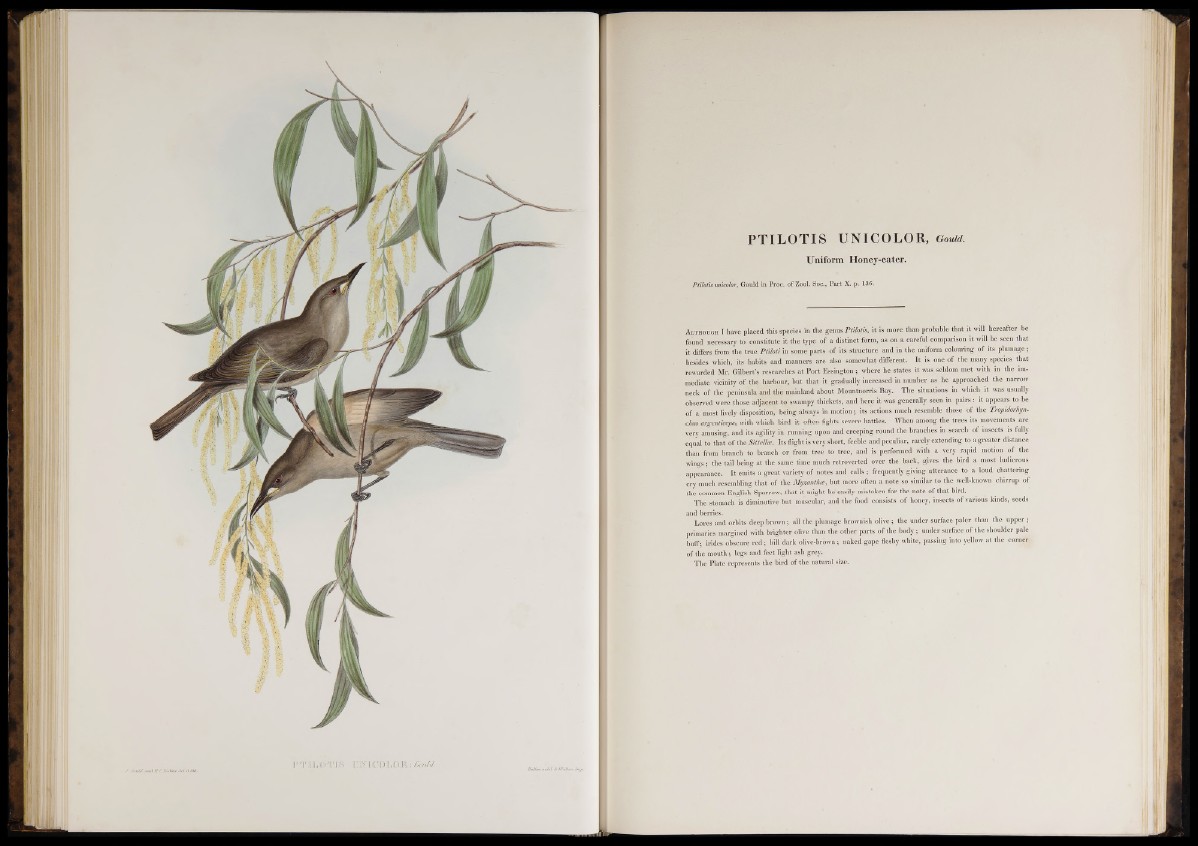
PTILOTIS UNICOLOR, Gould.
Uniform Honey-eater.
Ptilotis unicolor, Gould in Proc. of Zool. Soc., Part X. p. 136.
A l t h o u g h I have placed this species in the genus Ptilotis, it is more than probable that it will hereafter be
found necessary to constitute it the type of a distinct form, as on a careful comparison it will be seen that
it differs from the true Ptiloti in some parts of its structure and in the uniform colouring of its plumage;
besides which, its habits and manners are also somewhat different. It is one o f the many species that
rewarded Mr. Gilbert’s researches at Port Essington ; where he states it was seldom met with in the immediate
vicinity of the harbour, but that it gradually increased in number as he approached the narrow
neck of the peninsula and the mainland about Mountnorris Bay. The situations in which it was usually
observed were those adjacent to swampy thickets, and here it was generally seen in pairs: it appears to be
o f a most lively disposition, being always in motion; its actions much resemble those of the Tropidorhyn-
chus argenticeps, with which bird it often fights severe battles. When among the trees its movements are
very amusing, and its agility in running upon and creeping round the branches in search of insects is fully
equal to that of the Sittella. Its flight is very short, feeble and peculiar, rarely extending to a greater distance
than from branch to branch or from tree to tree, and is performed with a very rapid motion of the
wings; the tail being at the same time much retroverted over the back, gives the bird a most ludicrous
appearance. It emits a great variety o f notes and calls ; frequently giving utterance to a loud chattering
cry much resembling that of the Myzantha, but more often a note so similar to the well-known chirrup of
the common English Sparrow, that it might be easily mistaken for the note of that bird.
The stomach is diminutive but muscular, and the food consists of honey, insects o f various kinds, seeds
and berries.
Lores and orbits deep brown; all the plumage brownish olive ; the under surface paler than the upper ;
primaries margined with brighter olive than the other parts of the body; under surface o f the shoulder pale
buff'; irides obscure red; bill dark olive-brown ; naked gape fleshy white, passing into yellow at the corner
of the mouth; legs and feet light ash grey.
The Plate represents the bird of the natural size.